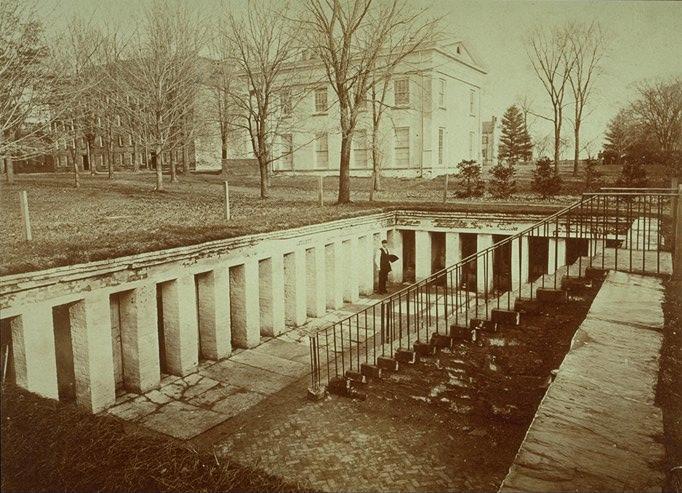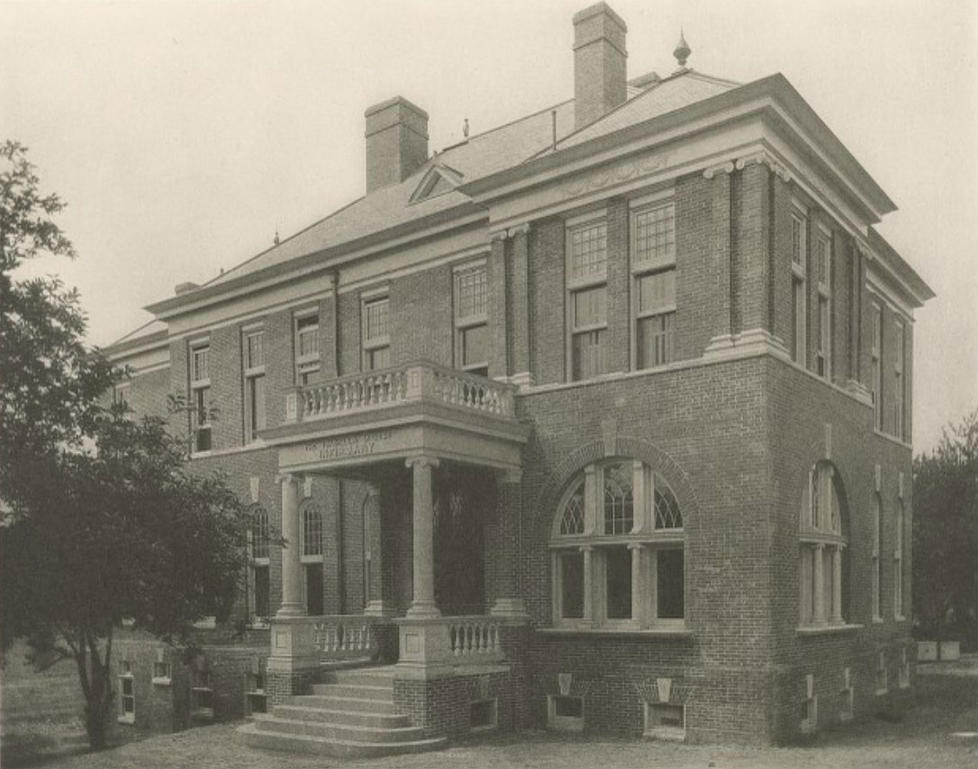“Father McKenzie, writing the words of a sermon that no one will hear;
No one comes near…
All the lonely people, where do they all belong?”
— Lennon & McCartney, Eleanor Rigby, 1966
I hope as you read this you’re comfy and safe. Over the many crevices on the face of the globe, however, that may mean any number of things. The global COVID-19 pandemic has taken over the quality part of our lives and then intruded further from there, blowing up many thousands of plans and dreams for Princetonians as they have for everyone else. I can’t stop thinking about members of my grandchild Class of 2020, on Feb. 1 in mid-thesis or well on the way to an NCAA Tournament, now spread to the four winds, out of sight but in virtual contact, endlessly considering eagerly anticipated milestones, beyond number, now become mocking wraiths on a discarded calendar, a really bad joke become nightmare.
It is certainly one of the greatest of ironies that, on a campus (so much its own universe that it has its own proud name of Orange Bubble) whose reason for being is the exchange and creation of knowledge and, on a good day, wisdom too, that what frequently sticks in your mind like chewing gum on the bottom of your Chuck Taylors is the disruptions, the contraventions to order and unexpected travesties of one’s college days. Historically, these have included not only your rogue New Jersey blizzard but energy-supply crises, the Revolutionary War and, most insidiously, public-health incursions.
It is worth noting, given 274 years of robust opportunity to get its constituents infected, that Princeton has done far better on the health front than most other operations of its type; it is even more important to realize this was not happenstantial. The very relocation of the college to Princeton in 1756 consciously adhered to the medical wisdom of the day, but then again so did the treatments that killed off five of its presidents in rapid succession over 20 years.
Scots divine John Witherspoon changed all of that in 1768, bringing with him a deep respect for the newly developing scientific world. Notably, this included the hiring of the nation’s first undergraduate chemistry professor, John Maclean Sr., in 1795, and getting a trained physician as a bonus. His son John Jr. 1816 began teaching at the college in 1818, retiring as president 50 years later; he and his two maiden sisters nursed many students back to health over this time, recalling the wisdom of their father. Remarkably, Maclean was immediately succeeded in 1868 by another physician’s child, Isabella McCosh, newly arrived from Scotland with her renowned husband James. Isabella was the daughter of physician Alexander Guthrie. She patiently attended each sick student with clean sponge baths and medicinal diet, and became almost instantly the most beloved and third-most respected person on campus (after her husband and the retired Maclean). This worked fine until 1880, when it didn’t.
There are two pieces of background you should know. The first is the ongoing battle of the undergrads with bathroom facilities, essentially forever; they would burn down the outhouses that had gradually clustered south of Cannon Green, the trustees would halfheartedly rebuild them of flimsy materials since they were likely to be reburned, which of course became a self-fulfilling prophecy. So in 1861 the authorities completely changed tacks, putting an entire new concrete multi-seat complex below ground level, where it indeed could not burn, but continued to leach into the campus water supply and earned the sobriquet Cloaca Maxima from the inspired classics scholars who still felt it quite disgusting.
The second piece is the creation, coincidentally in 1861, of the United States Sanitary Commission, a private agency a la the Red Cross, to improve the health and welfare of the Union soldiers during the Civil War, on the British model from the Crimean War. This was a giant step both in promoting public health and medical research, and in promoting public awareness of the potential of organized planning and projects to improve the lives of millions of everyday people. Although the commission ended with the war, its impact on the populace continued.Such was the atmosphere in Princeton when students in May 1880 began to fall prey to typhoid fever. Many of those infected lived off campus. Water supplies were checked and double-checked, everyone was eventually sent home well in advance of Commencement, but not until 10 infected students died — one junior a suicide while his mother, who’d come to care for him, was downstairs eating supper. Although, with the exception of one compromised boarding house water supply, the causes seemed vague, President McCosh swiftly organized a faculty sanitary commission that stayed on the job for many years, immediately dictated major changes in campus drainage, and began the drive for the first Isabella McCosh Infirmary, dedicated in 1892. Her protestations of the naming honor were met with a firm “Who asked you?” from the trustees, and as long as students of her husband held sway on campus, her leadership was remembered and revered; when an expanded and updated infirmary was built in 1925, there was never a suggestion of a name change.
And indeed it was the McCoshes’ students Woodrow Wilson 1879 and John Grier Hibben 1882 (who had been a sophomore during the typhoid epidemic) who put Princeton into a strong position in health care at the beginning of the 20th century. In 1908 Dr. John Carnochan 1896 was hired as full-time physician in charge of the infirmary; then in 1910 Princeton became the first college in the country to offer mental-health care, in the person of Dr. Stewart Paton 1886. In 1911, further new ground was broken by hiring a new chairman of health and physical education, Dr. Joseph Raycroft, who beefed up services in both realms. In 1916, he presided over a two-week delay opening the University for the fall term as an infantile paralysis (polio) epidemic ran its course.Which brings us to the main event: The Spanish flu (H1N1, but we’ll call it Spanish because no one now recognizes any other label) epidemic of 1918 descended on a world weakened by war and killed perhaps 50 million people; no one really knows. It came in three waves, the most lethal in the fall of 1918. The University was fortunate on multiple levels: the dramatic upgrade of health services in the prior decade, the presence of military commanders in the WWI government training programs based on campus, and the experience of others in the first round the preceding spring. Electing to use draconian disinfecting procedures on new arrivals to the campus, a thorough policy of protective sequestration (not dissimilar to the current social distancing), and an orderly overflow space in the field house when McCosh Infirmary filled, all overseen by Carnochan, the University rode through the storm with zero fatalities, while some other campuses had dozens. Perhaps even more impressively, Raycroft and Carnochan didn’t rest on their laurels for a minute. Beginning the next year, they planned a larger, more comprehensive McCosh, completed in 1925.
The story was insightfully told by Mark Bernstein ’83 here in Your Favorite Periodical, and perhaps more impressively, was written in 2008, before the 2009 swine flu pandemic (also H1N1), which was handled with self-isolation and vaccination following about 700 cases on campus. He concedes that nobody really knows how much luck contributed to the 1918 outcome at the University, but comparative numbers are instructive: 32 people died in the town of Princeton, literally across the street. Meanwhile, Philadelphia simultaneously went ahead with its Liberty Bond Parade on Broad Street, which attracted a crowd of 200,000. St. Louis, about half the size of Philly, canceled theirs; St. Louis had 700 deaths in the epidemic, Philadelphia 12,000. Of the 105 million people in the U.S., perhaps 30 million got the flu, and 675,000 died.
There have been other flurries. When the Asian flu (H2N2) attacked the U.S. in the fall of 1957, about 200 were treated in the infirmary and an overflow in Chancellor Green, but it dissipated without threat to life in a few weeks with the aid of a new vaccine. A vaccine also eventually quelled a local outbreak of eight meningitis cases in 2013. But nothing until now has risen near the level of public-health effort at Princeton in 1918.More than a century of hard work, insight, and disciplined planning went into the shutdown of the campus this year. But as you see around you, that is becoming an ever more complex challenge in an ever more complex and interrelated world; and if there’s a single truism to be divined here, it’s that we need to continue caring not only for the friends we see at Reunions (except for this year), but for everyone else we see each day. The Big Blue Marble is not so big after all.














No responses yet